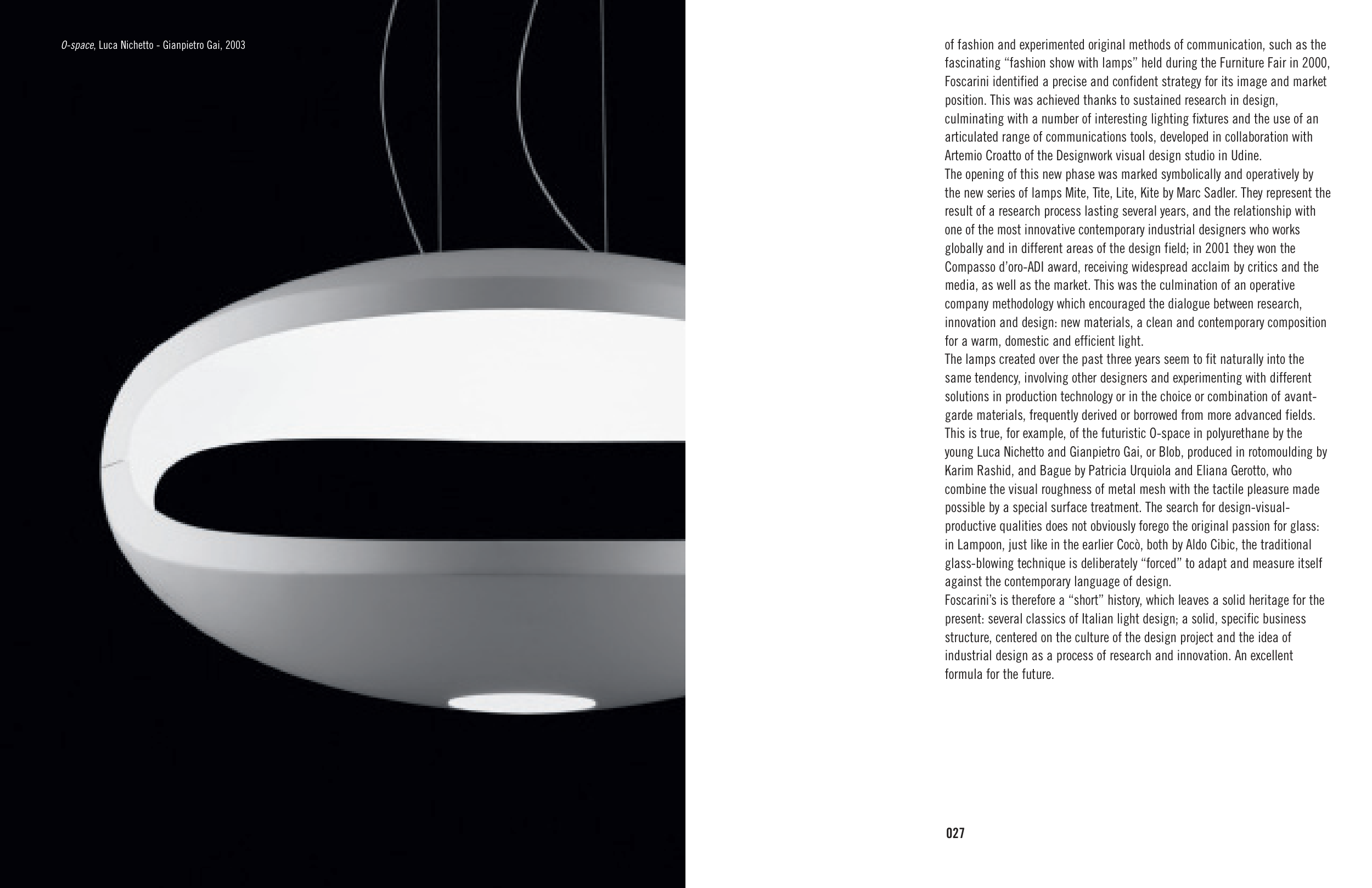027
O-space, Luca Nichetto - Gianpietro Gai, 2003
of fashion and experimented original methods of communication, such as the
fascinating “fashion show with lamps” held during the Furniture Fair in 2000,
Foscarini identified a precise and confident strategy for its image and market
position. This was achieved thanks to sustained research in design,
culminating with a number of interesting lighting fixtures and the use of an
articulated range of communications tools, developed in collaboration with
Artemio Croatto of the Designwork visual design studio in Udine.
The opening of this new phase was marked symbolically and operatively by
the new series of lamps Mite, Tite, Lite, Kite by Marc Sadler. They represent the
result of a research process lasting several years, and the relationship with
one of the most innovative contemporary industrial designers who works
globally and in different areas of the design field; in 2001 they won the
Compasso d’oro-ADI award, receiving widespread acclaim by critics and the
media, as well as the market. This was the culmination of an operative
company methodology which encouraged the dialogue between research,
innovation and design: new materials, a clean and contemporary composition
for a warm, domestic and efficient light.
The lamps created over the past three years seem to fit naturally into the
same tendency, involving other designers and experimenting with different
solutions in production technology or in the choice or combination of avant-
garde materials, frequently derived or borrowed from more advanced fields.
This is true, for example, of the futuristic O-space in polyurethane by the
young Luca Nichetto and Gianpietro Gai, or Blob, produced in rotomoulding by
Karim Rashid, and Bague by Patricia Urquiola and Eliana Gerotto, who
combine the visual roughness of metal mesh with the tactile pleasure made
possible by a special surface treatment. The search for design-visual-
productive qualities does not obviously forego the original passion for glass:
in Lampoon, just like in the earlier Cocò, both by Aldo Cibic, the traditional
glass-blowing technique is deliberately “forced” to adapt and measure itself
against the contemporary language of design.
Foscarini’s is therefore a “short” history, which leaves a solid heritage for the
present: several classics of Italian light design; a solid, specific business
structure, centered on the culture of the design project and the idea of
industrial design as a process of research and innovation. An excellent
formula for the future.


